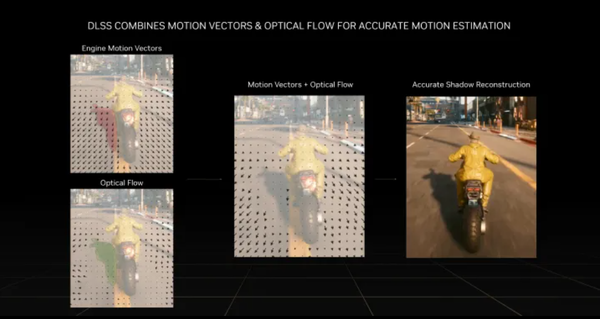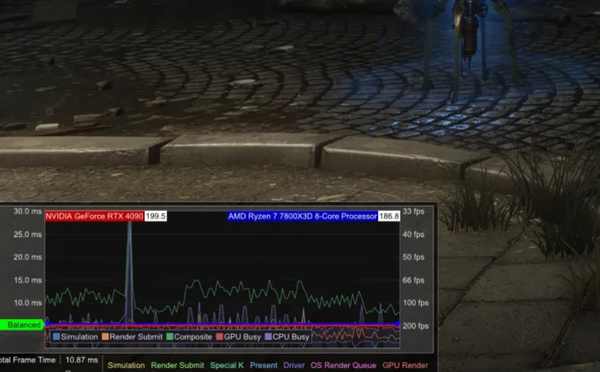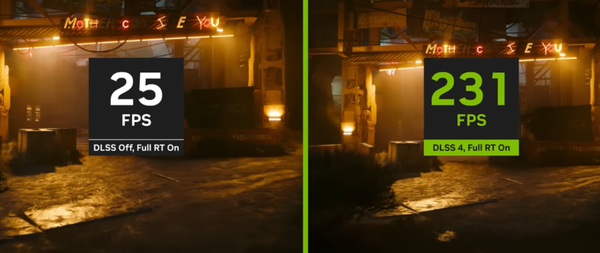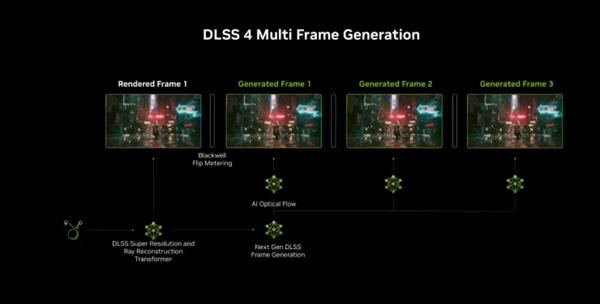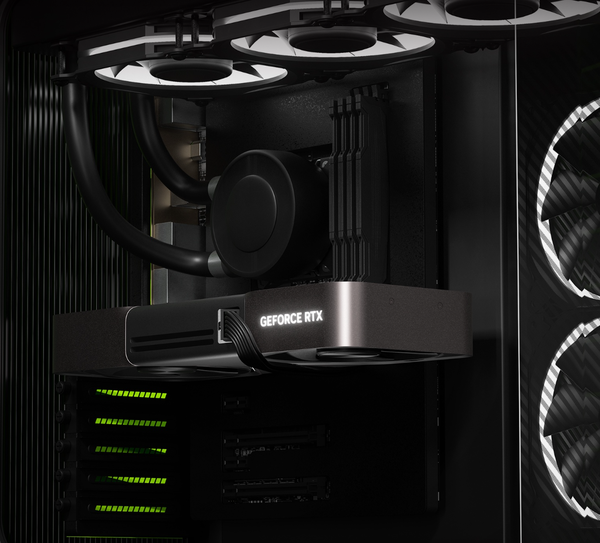
DLSS 4 frame interpolation is a groundbreaking technology introduced by NVIDIA that significantly enhances gaming performance. By using advanced frame generation techniques, DLSS 4 can increase frame rates and reduce latency, offering up to 4x performance improvements in supported games. However, there are common misunderstandings about how this technology works, particularly regarding its impact on latency and its reliance on frame interpolation methods. Let’s dive into the details to clear up the confusion and explore how DLSS 4 is changing the gaming experience. For more tech insights, check out this Gearbest Blog.
What is DLSS 4?
DLSS 4 (Deep Learning Super Sampling 4) introduces multi-frame generation capabilities to NVIDIA GPUs, revolutionizing frame rates in modern gaming. It promises to provide up to 4x performance improvement when paired with the RTX 50 series graphics cards. However, despite its impressive claims, the technology’s inner workings have sparked debates and confusion in the gaming community.
The Misconception: DLSS 4 and Frame Interpolation
A key point of misunderstanding stems from NVIDIA CEO Jensen Huang’s statement during a media Q&A. When asked about the technical details of DLSS 4, Huang denied that the technology uses frame interpolation, describing it as “predicting the future” instead. This statement, while simplifying the concept for the public, led to widespread confusion about the technology’s actual function.
In reality, DLSS 4 uses frame interpolation technology. This is consistent with the method used in DLSS 3 and similar technologies from other companies like AMD’s FSR 3. Frame interpolation works by comparing two rendered frames, analyzing the differences, and then generating intermediate frames based on those differences. In simple terms, DLSS 4 “fills in the gaps” between frames to enhance performance without the need for the game to render each frame in full.
The Truth Behind DLSS 4’s Frame Generation
While DLSS 4 does rely on frame interpolation, this should not undermine its performance improvements. This technology still offers significant performance gains and smoother gameplay, even though it operates in a manner similar to DLSS 3.
It’s essential to recognize that although the core technology of DLSS 4 mirrors earlier frame generation methods, it still introduces major benefits in terms of game performance, making it a breakthrough tool for gamers who seek to push their hardware to the limit.
Addressing Latency Concerns in DLSS 4
One of the primary concerns surrounding DLSS 4 is its impact on latency. Some critics worry that the additional “dummy” frames generated by DLSS 4 may worsen latency. However, the truth is more nuanced. The impact on latency is not linear. Whether DLSS 3 generates one extra frame or DLSS 4 generates three, the additional latency remains roughly the same.
For example, when playing a game at 60 frames per second (fps), the time between frames is 16.6 milliseconds. With DLSS 3, the frame rate increases to 120 fps, but the delay remains at 16.6 milliseconds. Similarly, with DLSS 4, even with a boost to 240 fps, the latency remains the same at 16.6 milliseconds. This shows that the increase in frame rate doesn’t linearly result in greater latency.
How DLSS 4 Works: Key Innovations
While DLSS 4 shares similarities with DLSS 3, there are critical differences that set it apart. One of the most significant improvements in DLSS 4 is the adoption of a new AI model architecture, particularly the integration of the Visual Transformer model. This change marks a departure from the traditional Convolutional Neural Network (CNN) used in earlier versions of DLSS.
The new Transformer model brings two key improvements:
- Self-attention mechanism: This allows the AI to track the importance of pixels across multiple frames, improving accuracy and reducing issues like flickering.
- Scalability: The new model has more parameters than the CNN, significantly boosting its ability to handle complex scenes and improve image quality.
According to NVIDIA, this new Transformer model delivers better stability and finer details, benefiting not just the RTX 50 series but also older RTX cards, provided the games support DLSS 4.
Is DLSS 4 Worth It?
While DLSS 4 has garnered attention for its impressive performance improvements, its full potential will only be clear when the next-generation RTX GPUs are officially released. As gamers and tech enthusiasts get their hands on the hardware, we will gain a clearer understanding of DLSS 4’s capabilities across various gaming scenarios. Until then, it’s safe to say that DLSS 4 represents a substantial leap forward in graphics performance, but like any cutting-edge technology, it comes with its share of complexities.
Conclusion
In conclusion, DLSS 4 is undoubtedly a groundbreaking advancement in frame rate enhancement technology, offering remarkable benefits for gamers. However, understanding its intricacies, such as the use of frame interpolation and its minimal impact on latency, is crucial to fully appreciating its potential. As more games implement DLSS 4 support, users will be able to evaluate the technology’s true impact in real-world scenarios.

